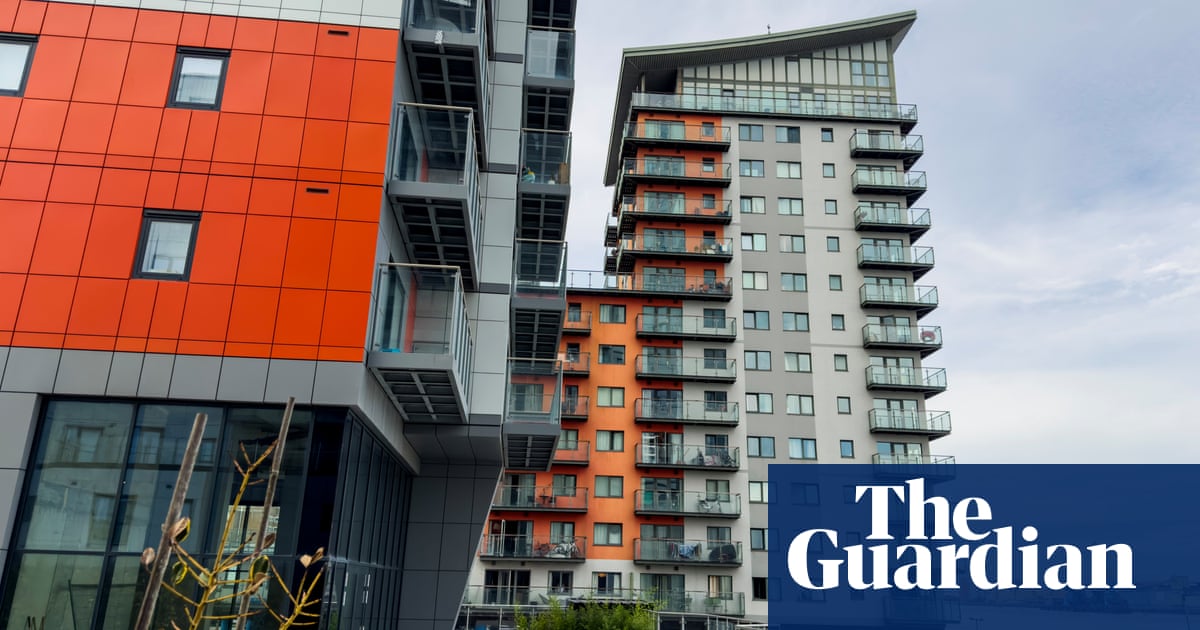
Thousands of people are stuck in flats they cannot sell or remortgage despite government efforts to persuade banks to drop fire-safety cladding checks on low-rise buildings.
The government announced in July that external wall surveys, or EWS1 certificates, which have become commonplace since the Grenfell disaster, would no longer be required on buildings not higher than 18 metres. But banks and building societies are still insisting on checks which, due to a shortage of qualified and insured fire engineers, can take months or even years to carry out.
It is not known how many are caught up in the cladding crisis but there are tens of thousands of low- to medium-rise buildings that house hundreds of thousands of people. London’s largest housing associations have said more than 1,200 potential sales of flats in their blocks have been affected.
Mortgage providers have become increasingly nervous about lending to people buying some flats since checks carried out in the aftermath of the Grenfell fire revealed many costly safety failings. Surveyors have also erred on the side of caution.
UK Finance, which represents the financial sector, said some lenders still required surveys on low-rise blocks because the government had not yet withdrawn earlier advice calling for checks on buildings of all heights.
“Lenders’ policies reflect their respective commercial and risk appetites for lending on flats with cladding, recognising that both the government’s advice note and the Royal Institution of Chartered Surveyors’ guidance in this area both remain in place,” said a spokesperson.
Hayley Myers and her young family have been unable to move out of their flat in London since February. Their last sale fell through because the buyer’s mortgage provider demanded an EWS1 assessment on their low-rise block.
The family has been told by their estate agent to wait before putting the flat on the market again because the government’s latest assurances haven’t changed the lender’s requirements.
“After falling pregnant with our second child, my husband and I had to face up to the fact that we could no longer afford to live in London. We were rapidly outgrowing our small two-bedroom flat in Zone 3, and buying a larger property was way beyond our means,” she said.
“That, along with childcare costs being the highest in the UK, cemented our decision to move back to Coventry, my home town, where we could buy a modest three-bedroom house with a garden and live nearer to family.”
The uncertainty is taking a toll on the couple’s health and keeping them awake at night. “Our mental health has declined and we feel claustrophobic in our own home,” she said. “I’m desperate for our young children to be as close to their grandparents as I was to mine growing up. Knowing we will never get this precious time back is heartbreaking.”
L&Q, which owns her building, said the safety of residents was its priority. It said it would begin inspecting blocks under 18m in height, which includes more than 1,500 buildings, next month.
“Building inspections are prioritised based on risk, with the highest-risk buildings scheduled first. We appreciate this leaves some with a longer wait than others and we are very sorry for the disruption on their lives,” it said. The company said it would inspect Myers’s building later this year. While L&Q has been able to inform 10,000 households they do not require checks, many of the housing association’s other low-rise blocks still require inspections because they have potentially dangerous cladding or balconies.
It is clear the lending market is making its own decisions. Barclays, which is one of the UK’s largest mortgage providers, said it still requested EWS1 assessments for buildings under 18m when recommended by valuers. NatWest also relies on its valuers’ judgments. Yorkshire Building Society said in some cases valuers were recommending EWS1 surveys for low-rise buildings.
Giles Grover, co-leader of the End our Cladding Scandal campaign, said hundreds of thousands of residents were trapped in flats they couldn’t sell, with some facing huge repair bills. “This crisis shows no sign of ending because we now know too much about the safety failings in buildings of all heights,” he said.
“The government needs to take control of the situation from assessment to remediation rather than leaving it to the market and lumbering people with unaffordable bills for issues they played no part in causing.”
The Department for Levelling Up, Housing and Communities, which has been rebranded by the new secretary of state, Michael Gove, said: “We’ve clearly set out that EWS1 forms should not be requested for buildings below 18 metres.”












